Pore-Scale Modeling of Gas–Oil Two-Phase Flow Based on the Phase-Field Method—A Case Study of Glutenite Reservoirs in China
Abstract
:1. Introduction
2. Methodology
2.1. Governing Equations
2.2. Numerical Implementation and Details
3. Results and Discussion
3.1. Distribution of Pore Pressure and Flow Velocity
3.2. The Analysis of Influencing Factors
4. Conclusions
Author Contributions
Funding
Data Availability Statement
Conflicts of Interest
References
- Shahraeeni, M.; Hoorfar, M. Pore-network modeling of liquid water flow in gas diffusion layers of proton exchange membrane fuel cells. Int. J. Hydrogen Energy 2014, 39, 10697–10709. [Google Scholar] [CrossRef]
- Lee, K.-J.; Kang, J.H.; Nam, J.H. Liquid water distribution in hydrophobic gas-diffusion layers with interconnect rib geometry: An invasion-percolation pore network analysis. Int. J. Hydrogen Energy 2014, 39, 6646–6656. [Google Scholar] [CrossRef]
- Liu, Z.; Wu, H. Pore-scale modeling of immiscible two-phase flow in complex porous media. Appl. Therm. Eng. 2016, 93, 1394–1402. [Google Scholar] [CrossRef]
- Salomov, U.R.; Chiavazzo, E.; Asinari, P. Pore-scale modeling of fluid flow through gas diffusion and catalyst layers for high temperature proton exchange membrane (HT-PEM) fuel cells. Comput. Math. Appl. 2014, 67, 393–411. [Google Scholar] [CrossRef]
- Blunt, M.J.; Bijeljic, B.; Dong, H.; Gharbi, O.; Iglauer, S.; Mostaghimi, P.; Paluszny, A.; Pentland, C. Pore-scale imaging and modelling. Adv. Water Resour. 2013, 51, 197–216. [Google Scholar] [CrossRef]
- Liu, Z.; Sunden, B.; Wu, H. Numerical modeling of multiple bubbles condensation in subcooled flow boiling. J. Therm. Sci. Eng. Appl. 2015, 7, 031003. [Google Scholar] [CrossRef]
- Liu, Z.; Sunden, B.; Yuan, J. VOF modeling and analysis of filmwise condensation between vertical parallel plates. Heat. Transf. Res. 2012, 43, 47–68. [Google Scholar] [CrossRef]
- Zu, Y.Q.; Yan, Y.Y.; Gedupudi, S.; Karayiannis, T.G.; Kenning, D.B.R. Confined bubble growth during flow boiling in a mini-/microchannel of rectangular cross-section part II: Approximate 3-D numerical simulation. Int. J. Therm. Sci. 2011, 50, 267–273. [Google Scholar] [CrossRef]
- Park, J.W.; Jiao, K.; Li, X. Numerical investigations on liquid water removal from the porous gas diffusion layer by reactant flow. Appl. Energy 2010, 87, 2180–2186. [Google Scholar] [CrossRef]
- Xuan, Y.; Zhao, K.; Li, Q. Investigation on heat and mass transfer in a evaporator of a capillary-pumped loop with the lattice Boltzmann method: Pore scale simulation. Transp. Porous Med. 2011, 89, 337–355. [Google Scholar] [CrossRef]
- Hao, L.; Cheng, P. Pore-scale simulations on relative permeabilities of porous media by lattice Boltzmann method. Int. J. Heat Mass Transf. 2010, 53, 1908–1913. [Google Scholar] [CrossRef]
- Yang, L.; Yang, D.; Zhang, M.; Meng, S.W.; Wang, S.L.; Su, Y.T.; Long, X. Application of nano-scratch technology to identify continental shale mineral composition and distribution length of bedding interfacial transition zone—A case study of Cretaceous Qingshankou formation in Gulong Depression, Songliao Basin, NE China. J. Petrol. Sci. Eng. 2024, 234, 212674. [Google Scholar] [CrossRef]
- Raeini, A.Q.; Yang, J.; Bondino, I.; Bultreys, T.; Blunt, M.J.; Bijeljic, B. Validating the generalized pore network model using micro-CT images of two-phase flow. Transp. Porous Media 2019, 130, 405–424. [Google Scholar] [CrossRef]
- Rokhforouz, M.R.; Akhlaghi Amiri, H.A. Phase-field simulation of counter-current spontaneous imbibition in a fractured heterogeneous porous medium. Phys. Fluids 2017, 29, 062104. [Google Scholar] [CrossRef]
- Liu, H.; Zhu, Z.; Patrick, W.; Liu, J.; Lei, H.; Zhang, L. Pore-scale numerical simulation of supercritical CO2 migration in porous and fractured media saturated with water. Adv. Geo-Energy Res. 2020, 4, 419–434. [Google Scholar] [CrossRef]
- Liu, Q.; Li, J.; Liang, B.; Liu, J.; Sun, W.; He, J.; Lei, Y. Complex wettability behavior triggering mechanism on imbibition: A model construction and comparative study based on analysis at multiple scales. Energy 2023, 275, 127434. [Google Scholar] [CrossRef]
- Zhu, Z.; Liu, J.; Liu, H.; Wu, M.; Song, Z. Numerical investigation of single- and two-phase flow in porous media with a bifurcated fracture. Phys. Fluids 2021, 33, 052117. [Google Scholar] [CrossRef]
- Zheng, J.; Ju, Y.; Wang, M. Pore-Scale Modeling of Spontaneous Imbibition Behavior in a Complex Shale Porous Structure by Pseudopotential Lattice Boltzmann Method. J. Geophys. Res. Solid Earth 2018, 123, 9586–9600. [Google Scholar] [CrossRef]
- Yang, L.; Yang, D.; Li, Y.; Cai, J.C.; Jiang, X.Y. Nanoindentation study on microscopic mineral mechanics and bedding characteristics of continental shales. Energy 2024. [Google Scholar] [CrossRef]
- Yang, L.; Wang, H.; Xu, H.; Guo, D.; Li, M. Experimental study on chara-cteristics of water imbibition and ion diffusion in shale reservoirs. Geoenergy Sci. Eng. 2023, 229, 212167. [Google Scholar] [CrossRef]
- Yu, L.; Evje, S.; Kleppe, H.; Kårstad, T.; Fjelde, I.; Skjaeveland, S.M. Spontaneous imbibition of seawater into preferentially oil-wet chalk cores experiments and simulations. J. Pet. Sci. Eng. 2009, 66, 171–179. [Google Scholar] [CrossRef]
- El-Amin, M.F.; Sun, S. Effects of gravity and inlet/outlet location on a two-phase cocurrent imbibition in porous media. J. Appl. Math. 2011, 2011, 673523. [Google Scholar] [CrossRef]
- Ahrenholz, B.; Tölke, J.; Lehmann, P.; Peters, A.; Kaestner, A.; Krafczyk, M.; Durner, W. Prediction of capillary hysteresis in a porous material using lattice-Boltzmann methods and comparison to experimental data and a morphological pore network model. Adv. Water Resour. 2008, 31, 1151–1173. [Google Scholar] [CrossRef]
- Almulhim, A.; Alharthy, N.; Tutuncu, A.N.; Kazemi, H. Impact of imbibition mechanism on flowback behavior: A numerical study. In Proceedings of the Abu Dhabi International Petroleum Exhibition and Conference, Abu Dhabi, United Arab Emirates, 4–7 November 2014; p. 171799. [Google Scholar]
- Vasheghani Farahani, M.; Mousavi Nezhad, M. On the effect of flow regime and pore structure on the flow signatures in porous media. Phys. Fluids 2022, 34, 115139. [Google Scholar] [CrossRef]
- Norouzi, S.; Soleimani, R.; Farahani, M.V.; Rasaei, M.R. Pore-scale simulation of capillary force effect in water-oil immiscible displacement process in porous media. In Proceedings of the 81st EAGE Conference and Exhibition 2019, London, UK, 3–6 June 2019; European Association of Geoscientists & Engineers: Utrecht, The Netherlands, 2019; Volume 2019, pp. 1–5. [Google Scholar]
- Hammoudi, M.; Henao, C.; Agbossou, K.; Dubé, Y.; Doumbia, M.L. New multi-physics approach for modelling and design of alkaline electrolyzers. Int. J. Hydrog. Energy 2012, 37, 13895–13913. [Google Scholar] [CrossRef]
- Deng, Z. Preliminary numerical simulation of multi-physics coupling of thermal anomaly mechanism before earthquake Research. Int. J. Seismol. 2012, 6, 289. [Google Scholar]

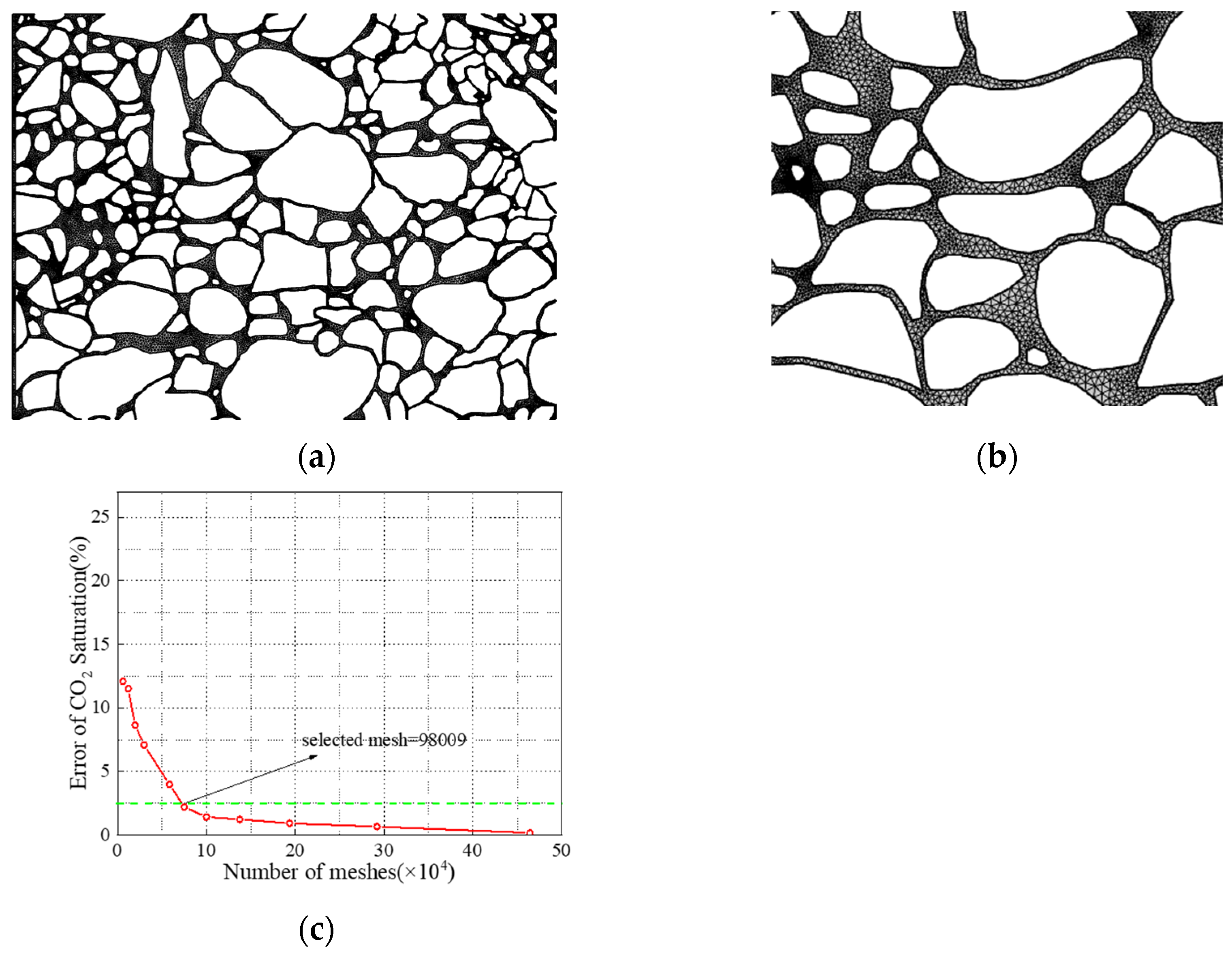

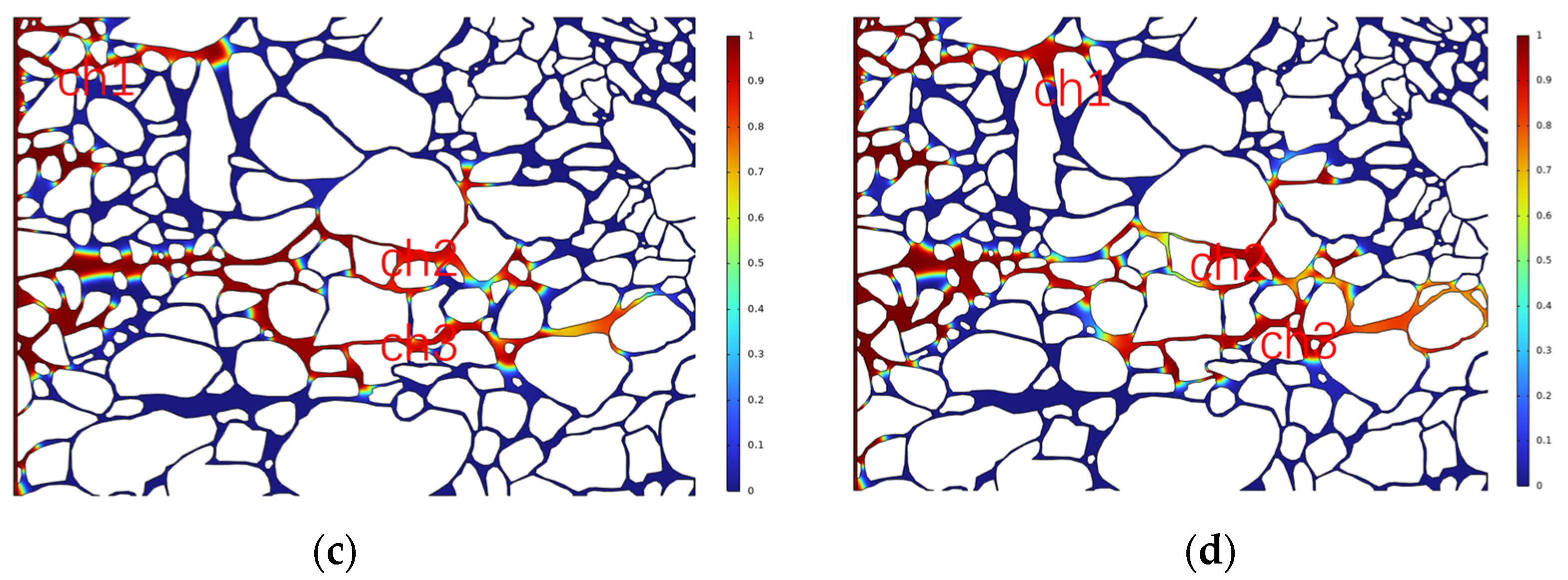

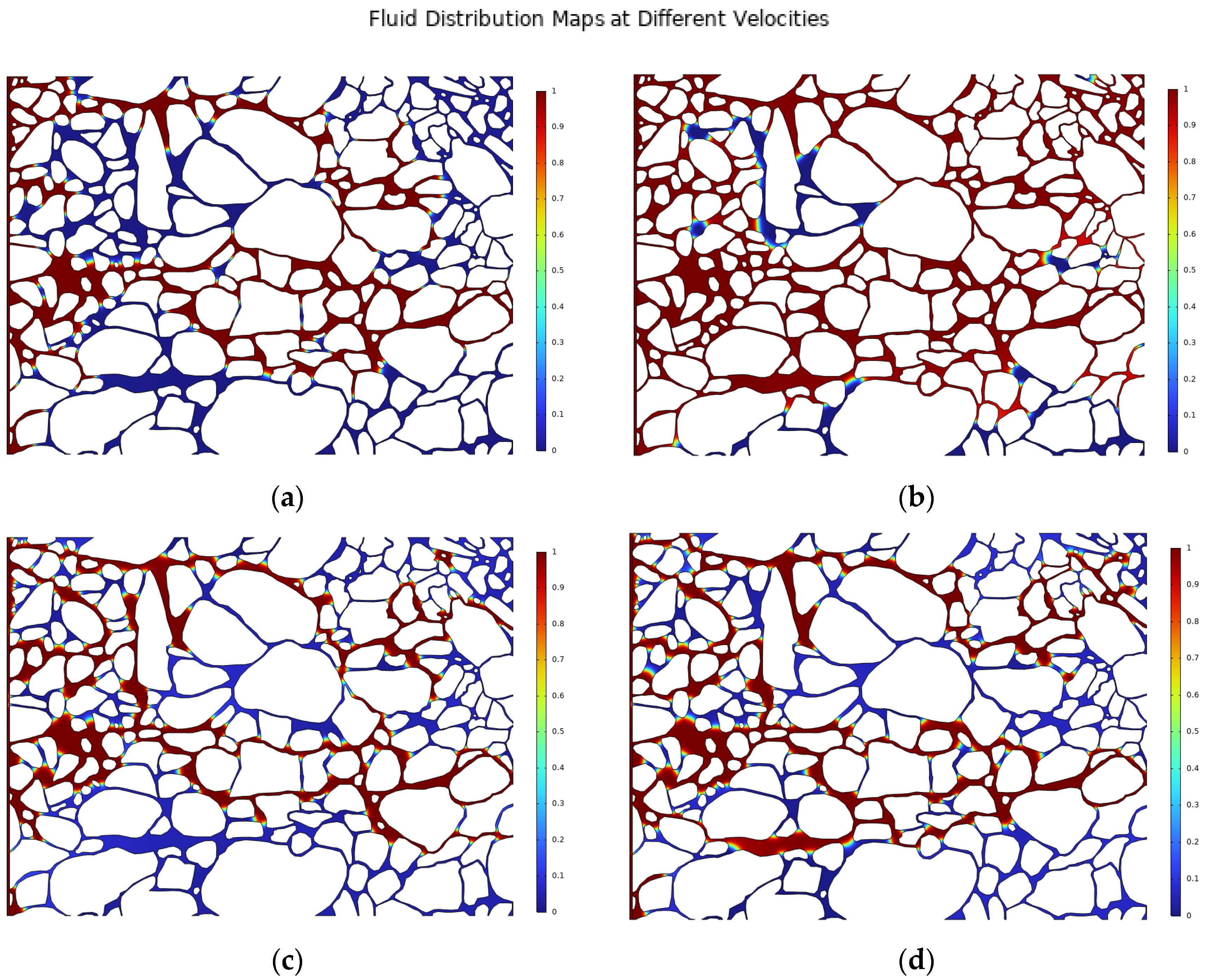
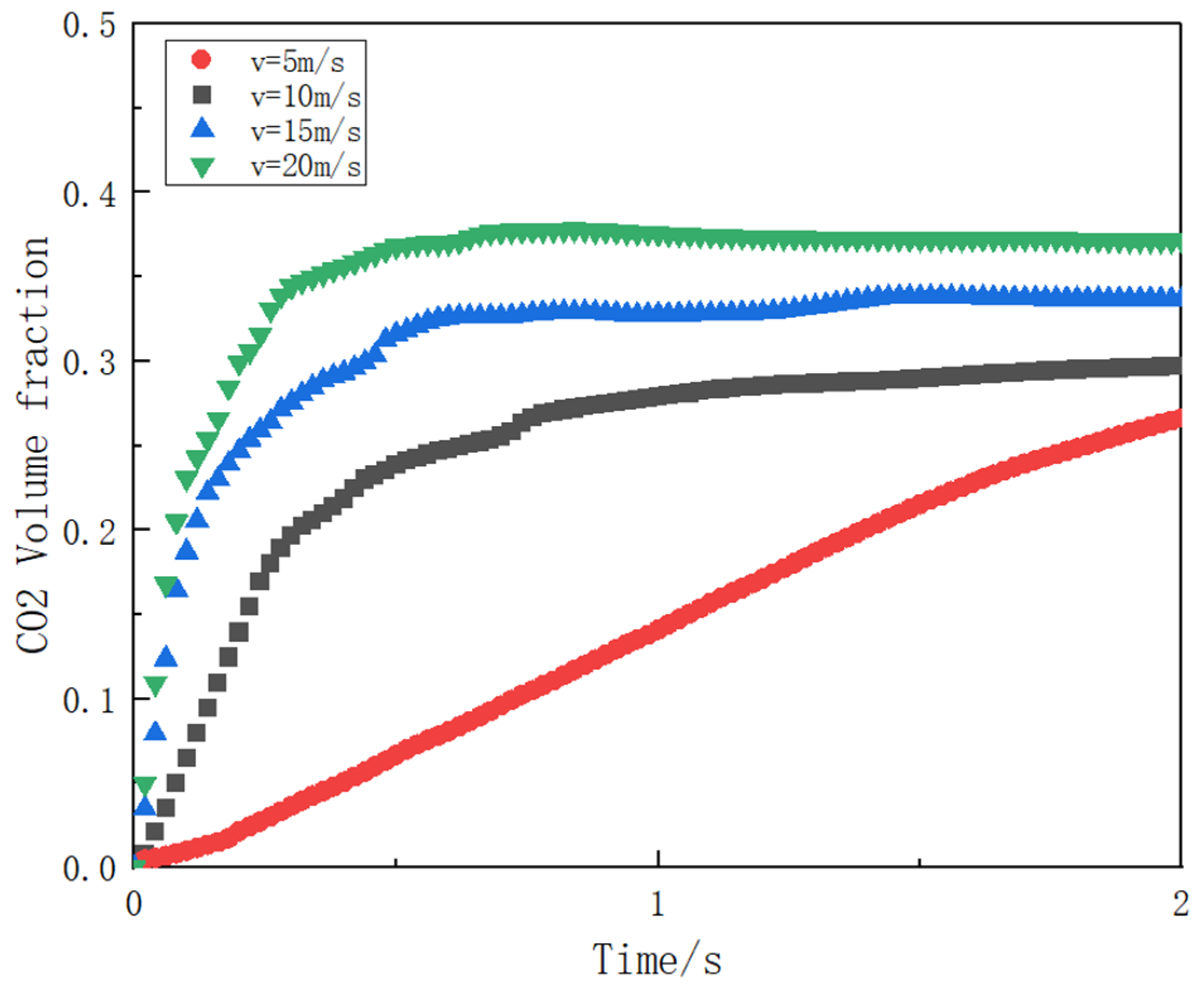
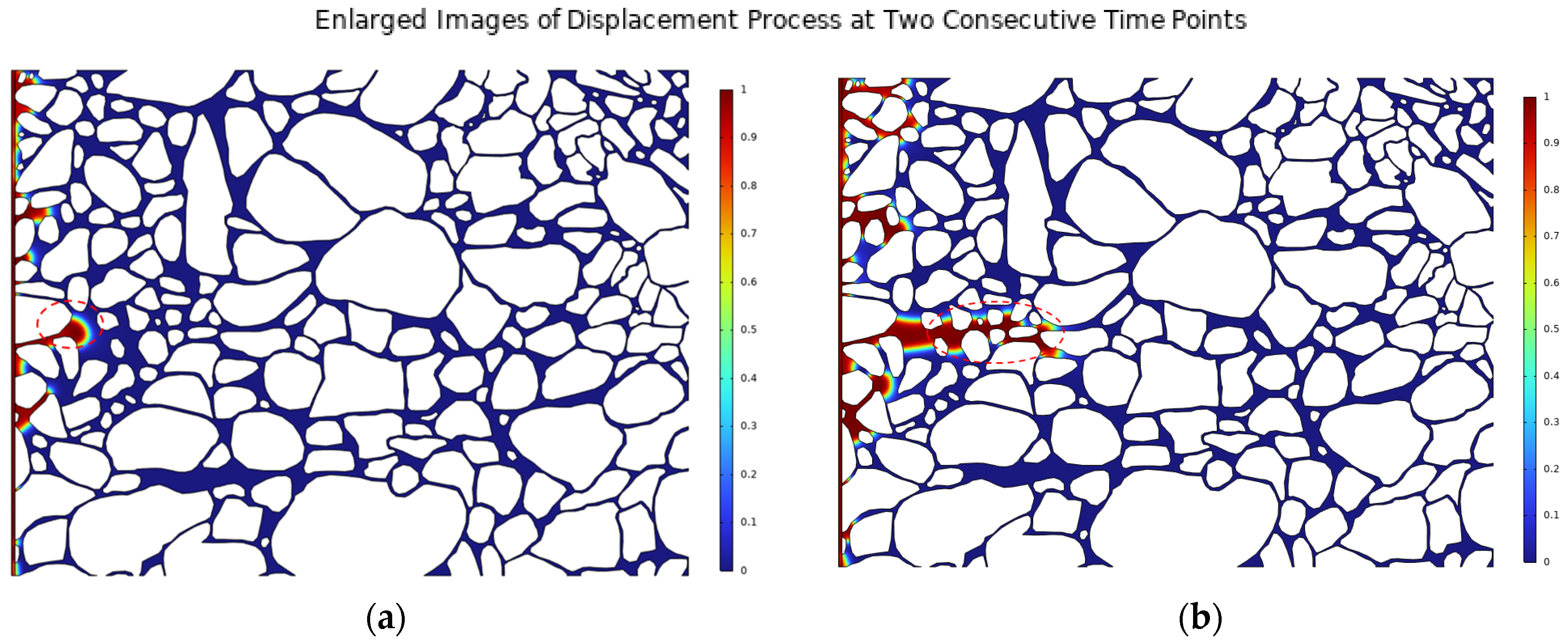
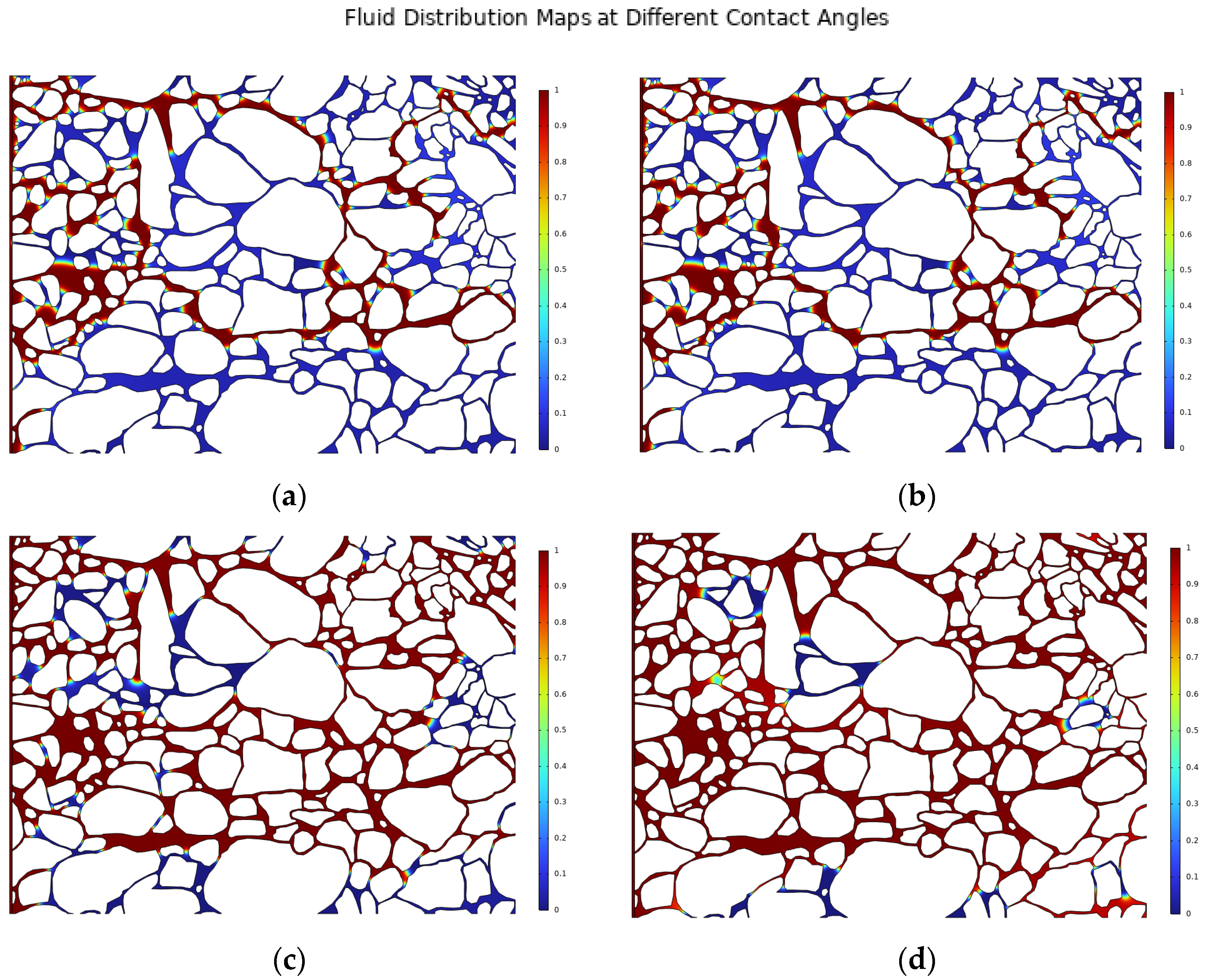
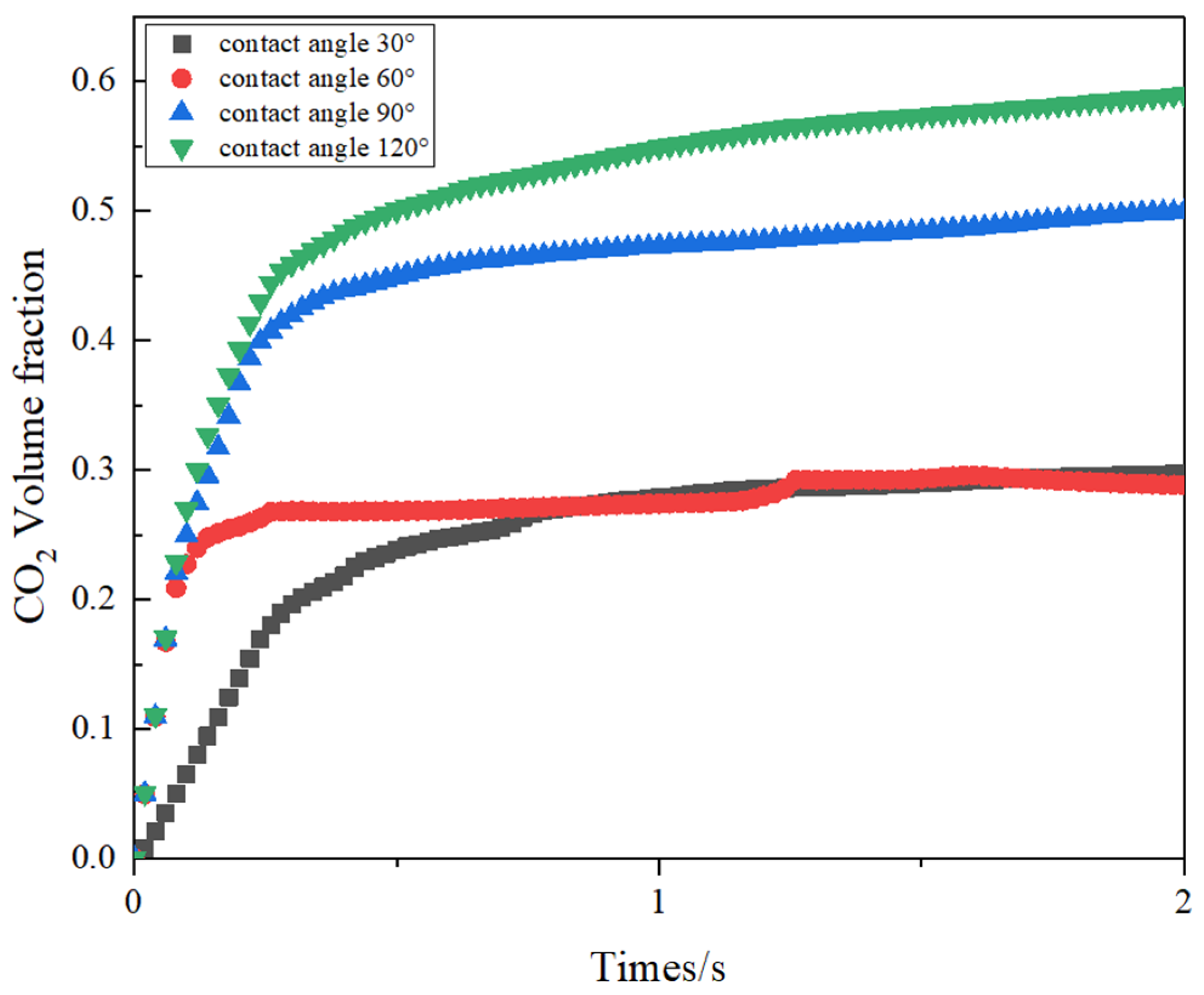
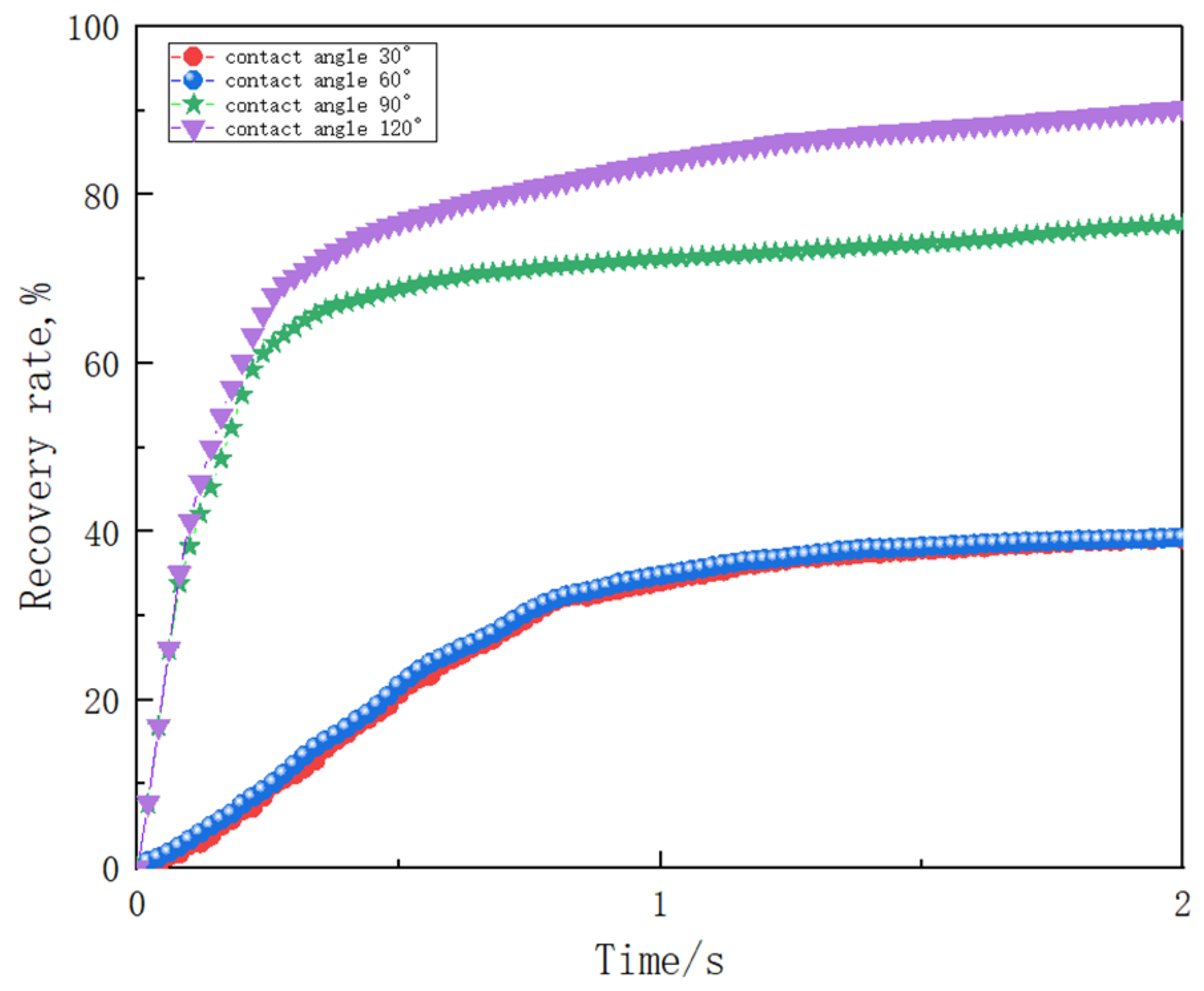

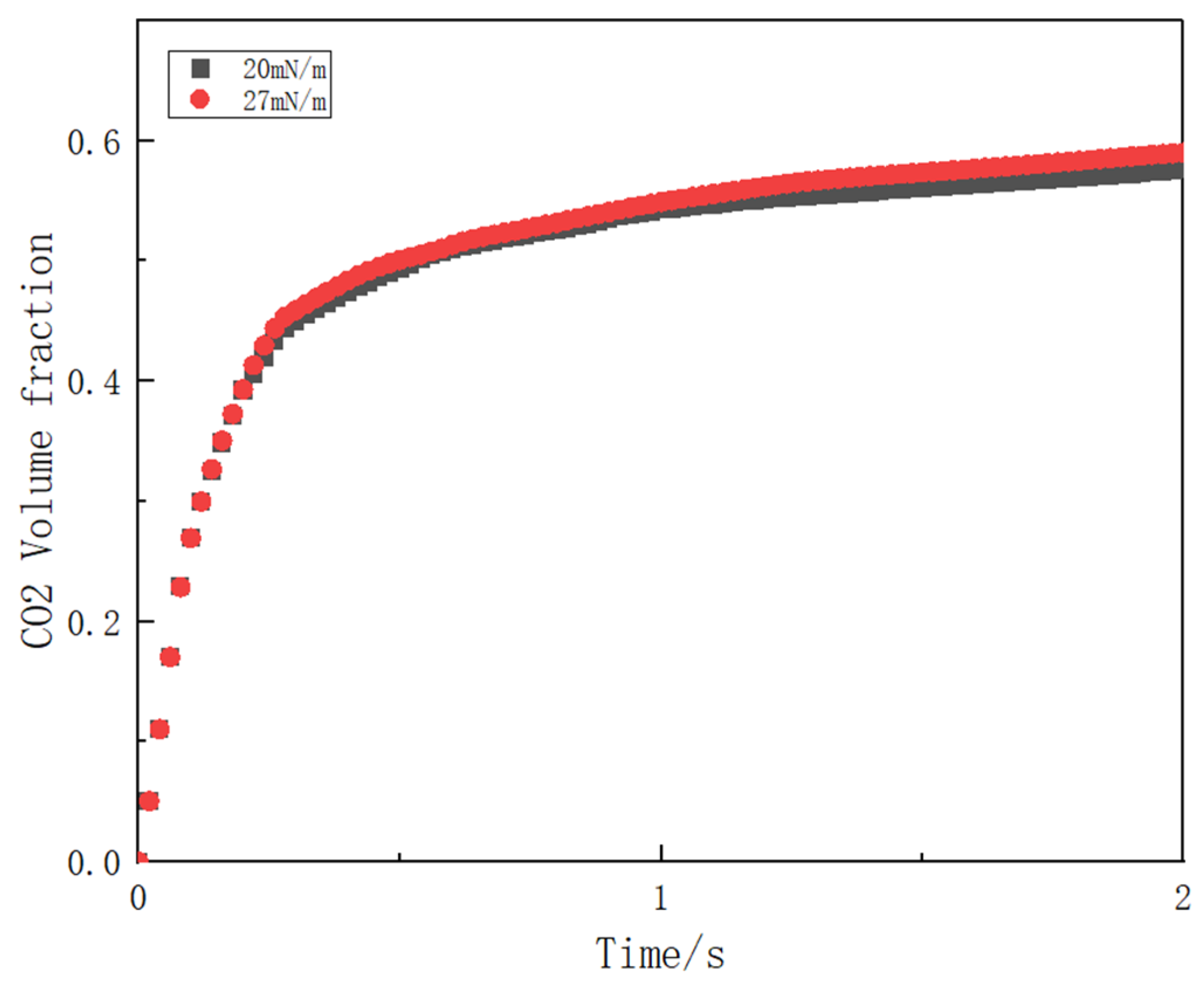
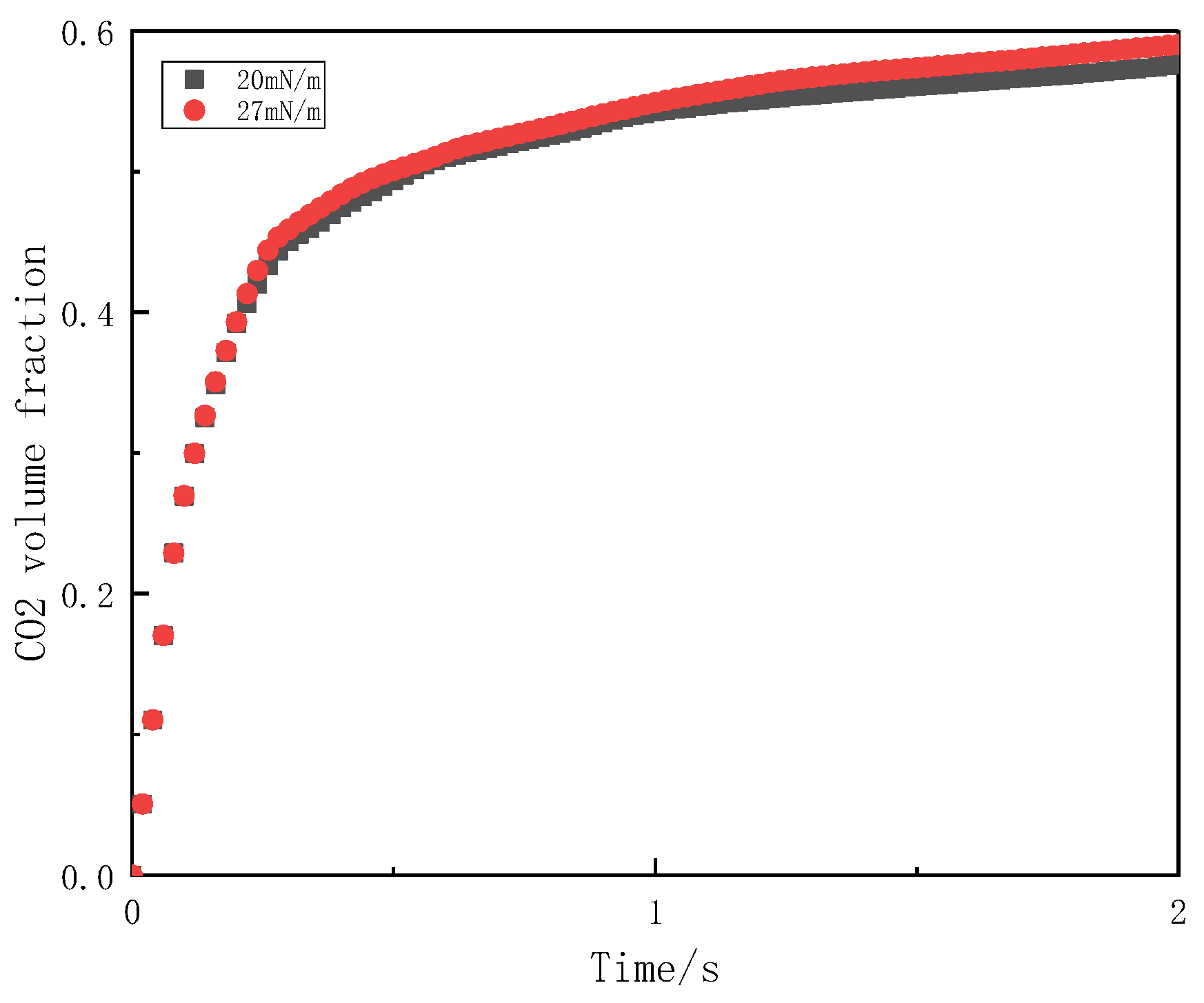
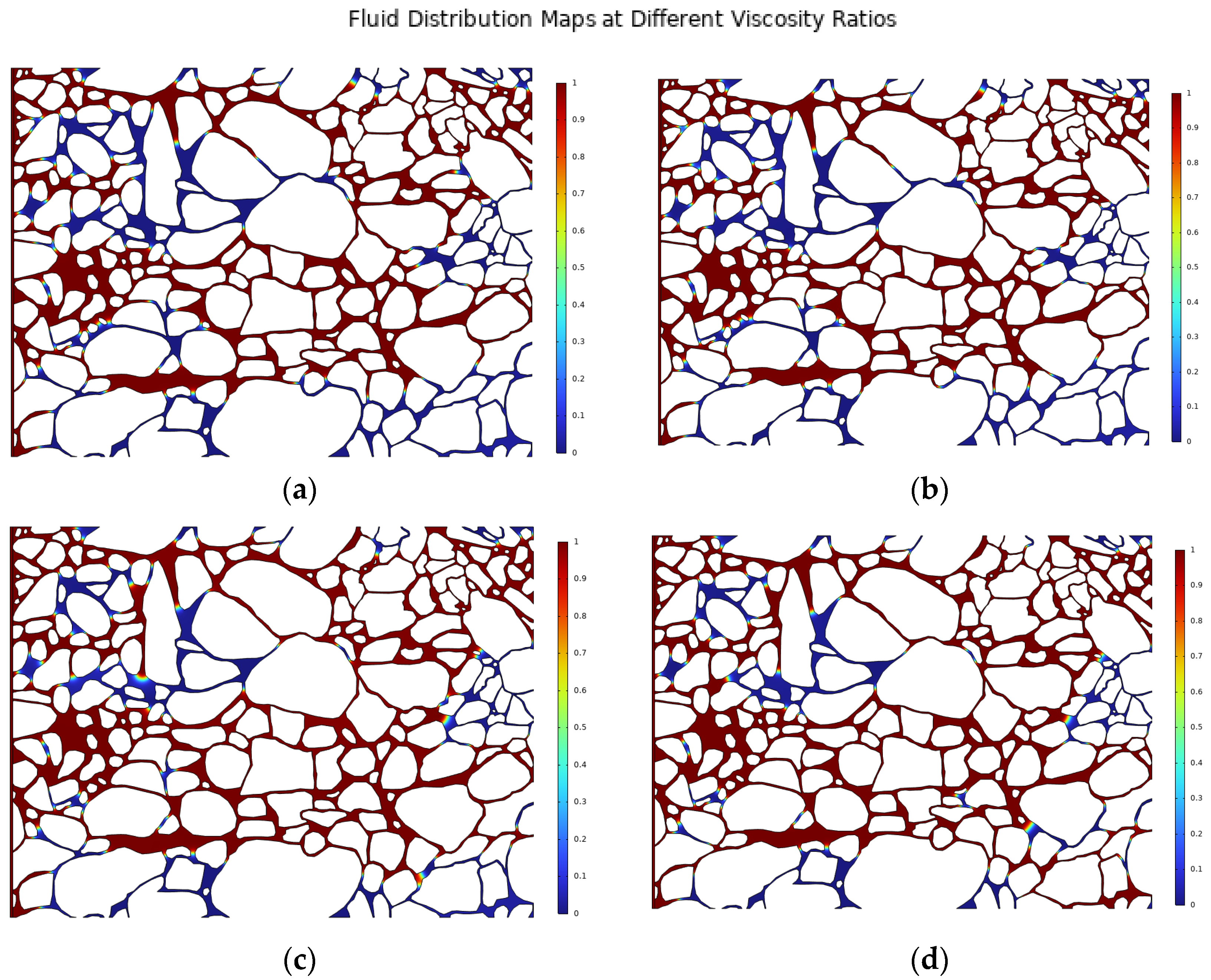
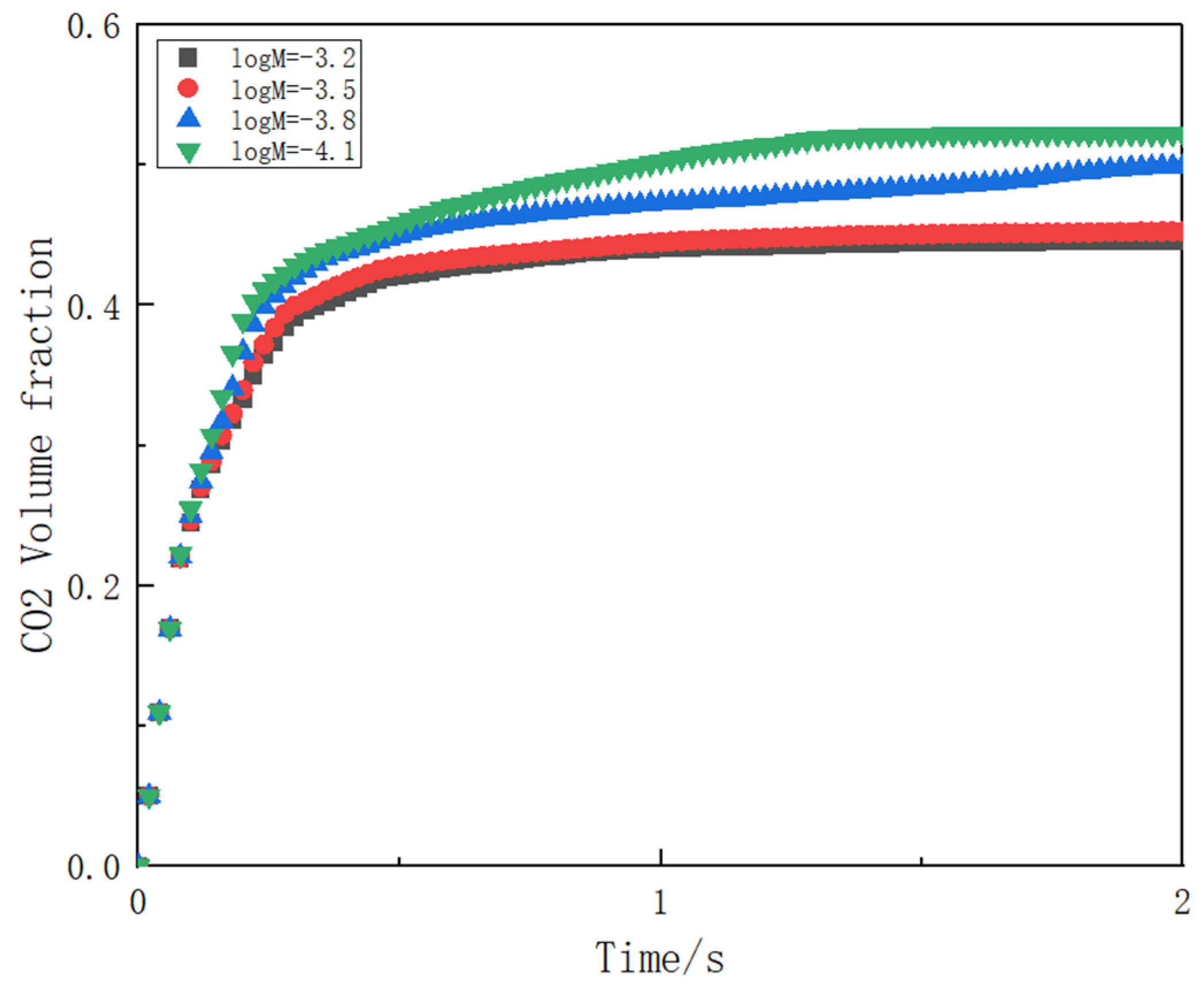
Disclaimer/Publisher’s Note: The statements, opinions and data contained in all publications are solely those of the individual author(s) and contributor(s) and not of MDPI and/or the editor(s). MDPI and/or the editor(s) disclaim responsibility for any injury to people or property resulting from any ideas, methods, instructions or products referred to in the content. |
© 2024 by the authors. Licensee MDPI, Basel, Switzerland. This article is an open access article distributed under the terms and conditions of the Creative Commons Attribution (CC BY) license (https://creativecommons.org/licenses/by/4.0/).
Share and Cite
Tian, Y.; Yang, L.; Chen, Y.; Bai, Z.; Yang, Y.; Wu, J.; Wang, S. Pore-Scale Modeling of Gas–Oil Two-Phase Flow Based on the Phase-Field Method—A Case Study of Glutenite Reservoirs in China. Processes 2024, 12, 1670. https://doi.org/10.3390/pr12081670
Tian Y, Yang L, Chen Y, Bai Z, Yang Y, Wu J, Wang S. Pore-Scale Modeling of Gas–Oil Two-Phase Flow Based on the Phase-Field Method—A Case Study of Glutenite Reservoirs in China. Processes. 2024; 12(8):1670. https://doi.org/10.3390/pr12081670
Chicago/Turabian StyleTian, Ya, Li Yang, Yi Chen, Zhongkai Bai, Youxing Yang, Jianwei Wu, and Suling Wang. 2024. "Pore-Scale Modeling of Gas–Oil Two-Phase Flow Based on the Phase-Field Method—A Case Study of Glutenite Reservoirs in China" Processes 12, no. 8: 1670. https://doi.org/10.3390/pr12081670







